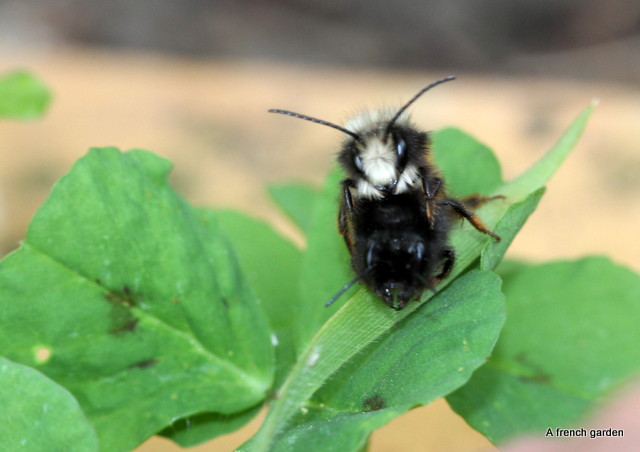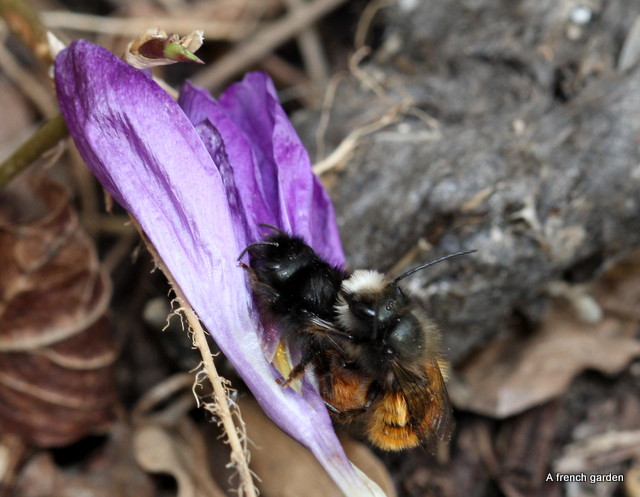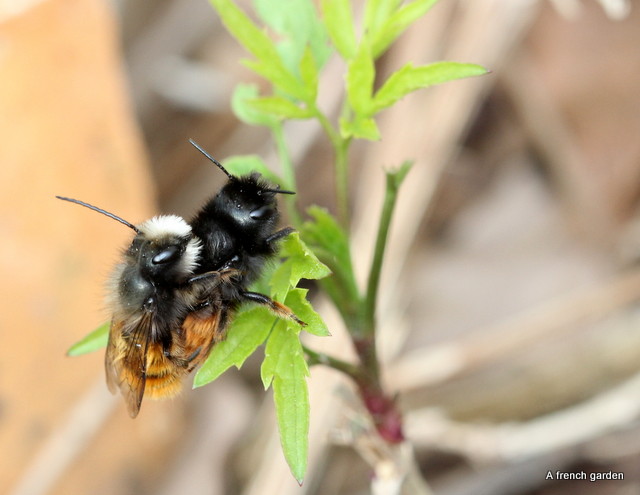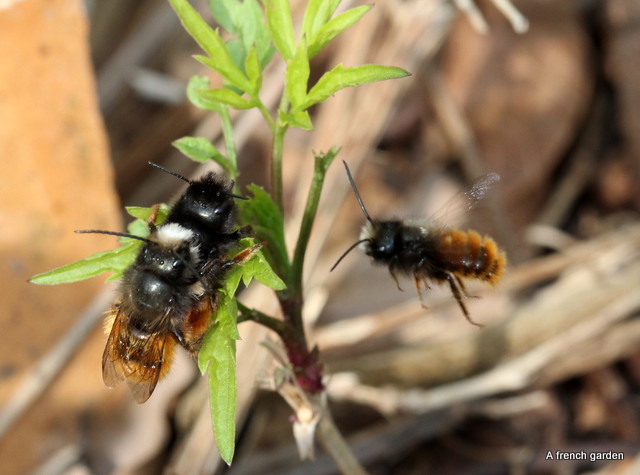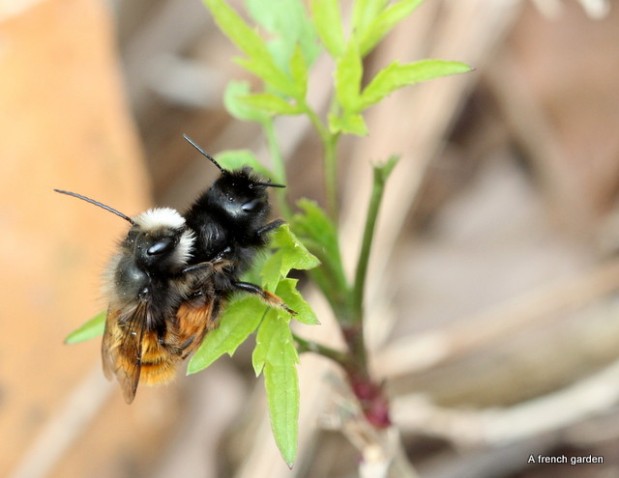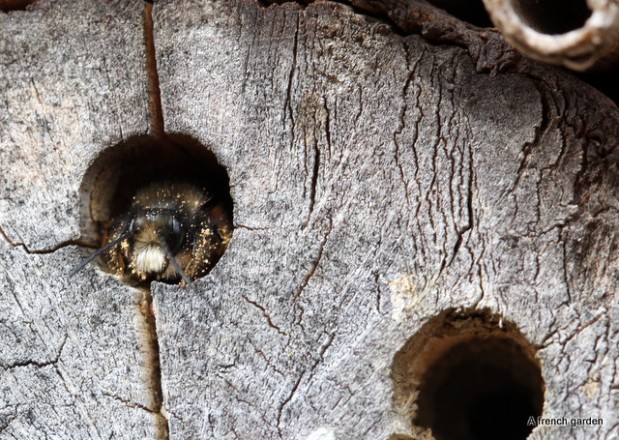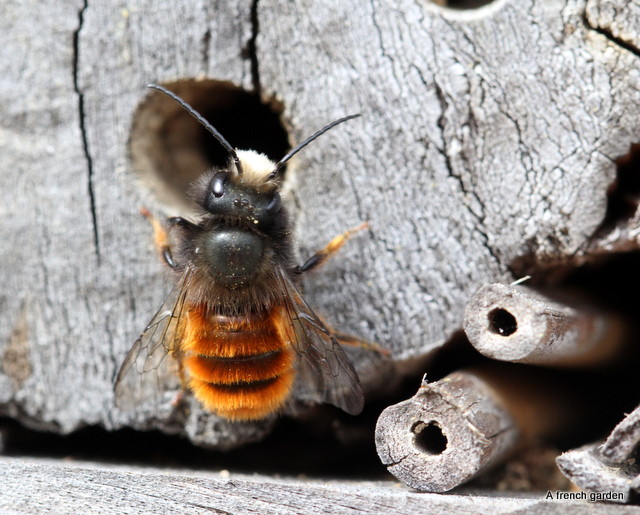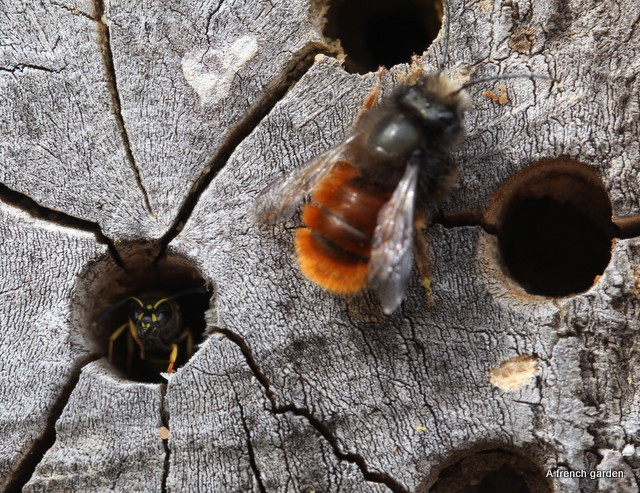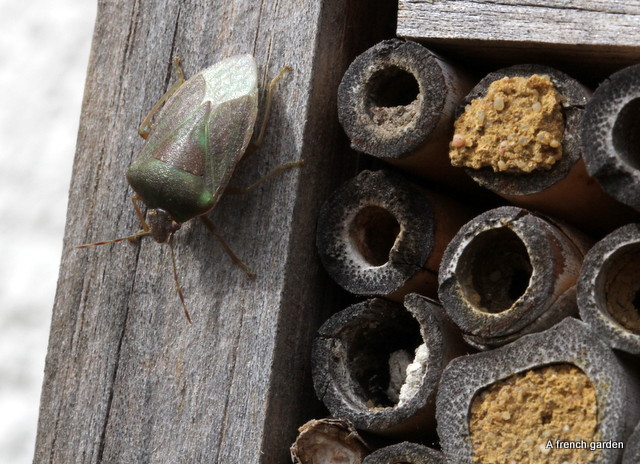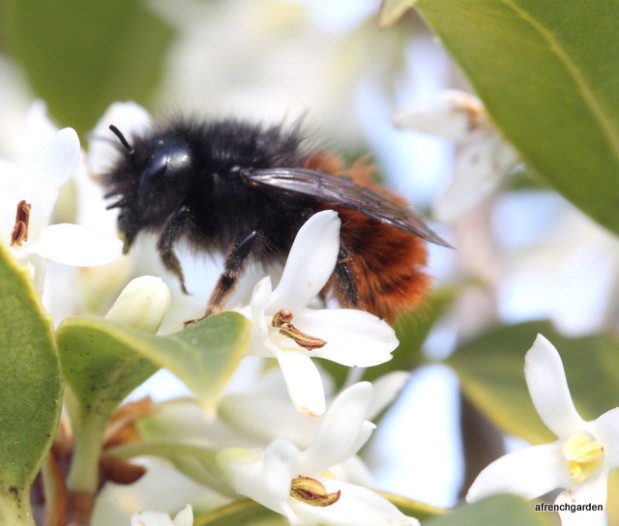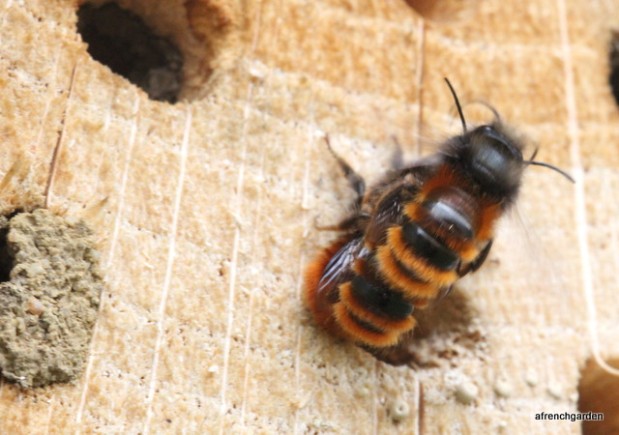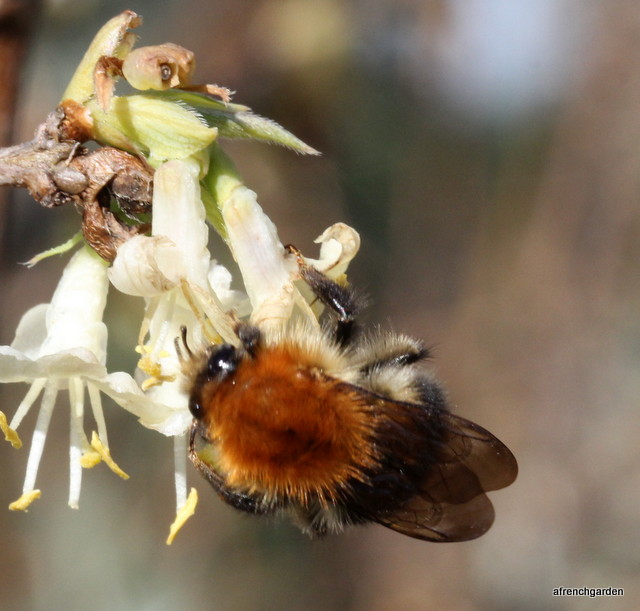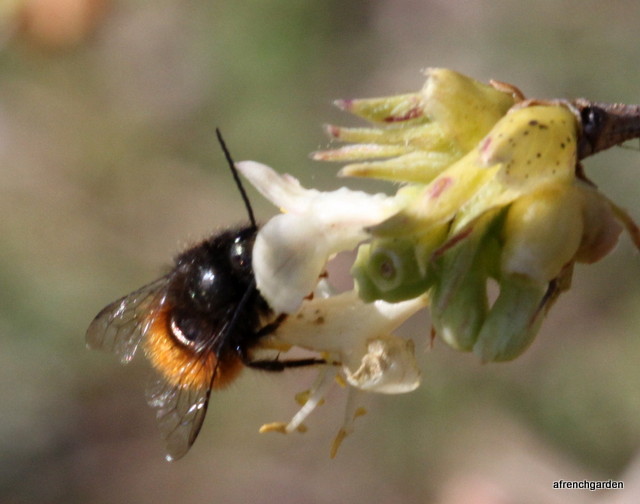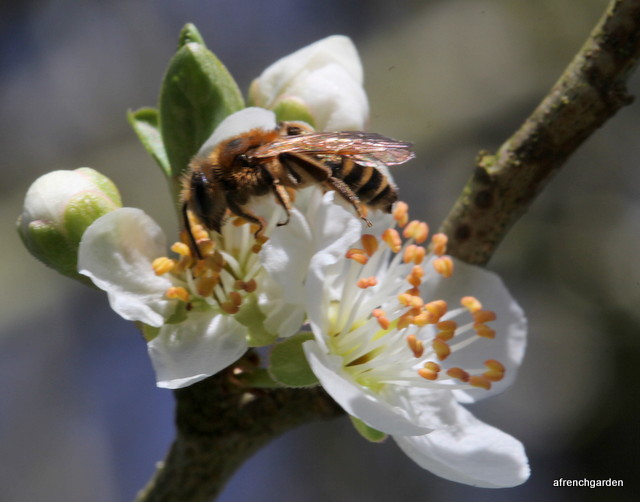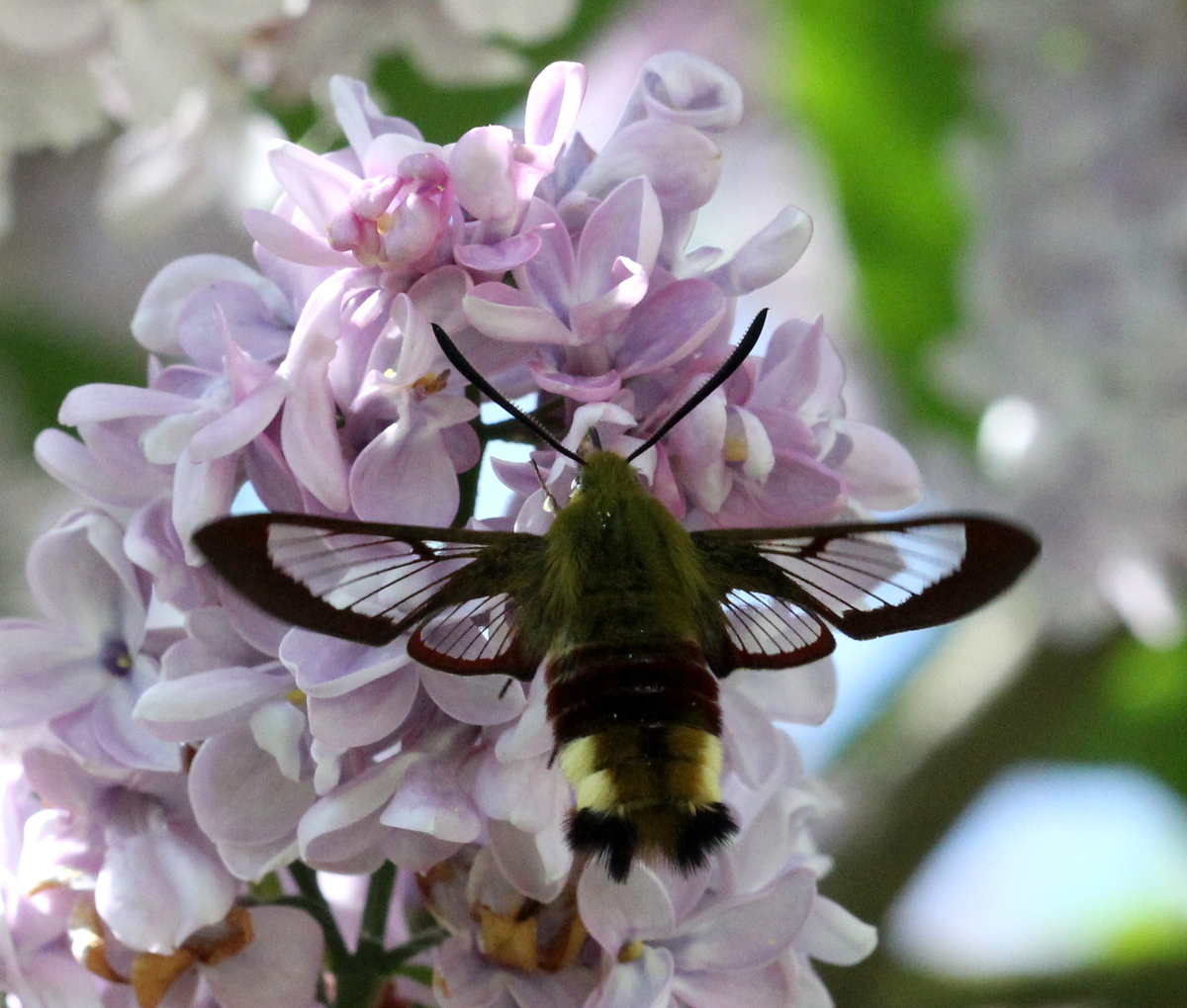
The first male Osmia cornuta emerged on the 19 March. Since then he has had to put up with dull, rainy days and colder than normal temperatures. I know that the females emerge a few weeks later but he seems completely unaware of this and faithfully visits the holes where I presume he can smell the females, still comfortably tucked up in their cocoons.

The males also play out the waiting game sitting in any of the empty holes of the bee hotel, hoping for the sun to come out or better still for the females to emerge.

It’s not just the Osmia males that are in waiting but the Anthophora are waiting too. (I think this may be an A. aestivalis because I’ve seen its legs and it is not a plumipes.)

But with all that waiting I think some of them must get a bit confused.

The male in the hole is desperately trying to explain he is not a female.

Giving up in desperation he retreats.

Then gathers his strength to be more assertive and push his way past.

Strangely, while all this, “Shuff off, I’m not a female” was going on, I noticed a black head emerging slowly from a hole not far beneath them. It did make me wonder that if I had noticed and they had been waiting for it to happen for two weeks that they might have been a bit quicker on the uptake.

Eventually, without me having to shout, “She’s behind you!”, one of them spotted her.

The first Osmia cornuta female of the season emerged!

Having had two weeks to prepare for the big event, I was a bit disappointed with what followed. I just couldn’t see this position as efficient for increasing the population of solitary bees. They tried the threesome, never the less, until the top one gave up.

The second male moved off to watch the proceedings from the side lines.
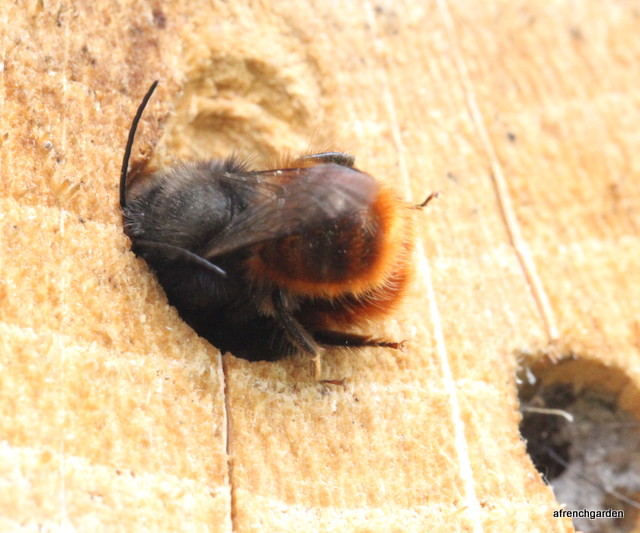
I felt the female was getting pretty fed up and then she made a clever manoeuvre towards a free hole.

This did not deter the determined male who hung on regardless.

The female managed to squash both of them into a stalemate, whereupon the male gave up.

Having shaken off her admirer the female emerged onto the surface of the log to take stock of her position.

A male tried to take advantage of her but was warned off with a defensive position and mandibles wide open in warning.
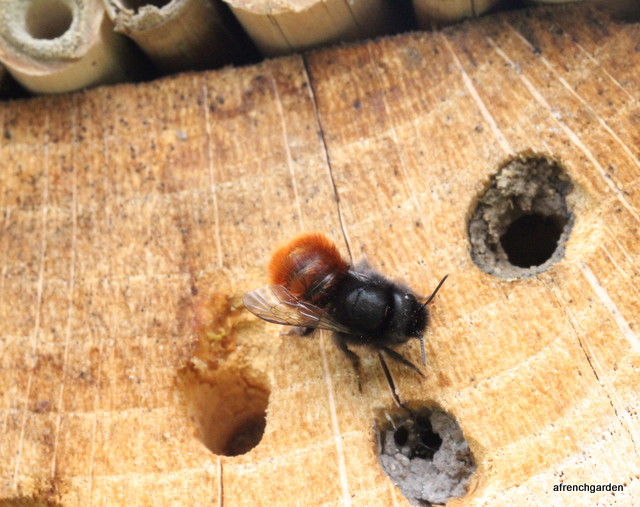
With a few butt wiggles and a quick groom the female took off. She will soon enough be mated and I am sure return to start her own nests.
The males that I have seen patrolling the bee hotel with impatience will have to get their technique improved if they hope to pass their genes to the future generation. So far I would rate them at 10/10 for winter survival, spring survival and persistence but they are going to have to do better at their next attempt at copulating.
